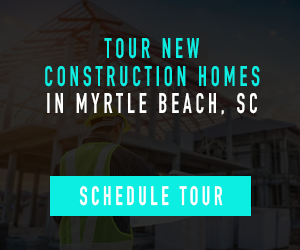
DIY automation pitfalls/myths: It’s time to rethink your strategy
In today’s mortgage industry, nearly every organization is battling inefficiencies caused by manual processes. Whether it’s a loan officer pulling data from one system to enter it into another, or underwriting teams relying on endless email threads and spreadsheets, the day-to-day operations behind most lending workflows are still shockingly analog.
These fragmented, repetitive tasks don’t just slow things down, they also operate in the shadows. Because they aren’t digitized, we don’t have access to performance data that would allow us to analyze, refine, and improve them. That means valuable opportunities to increase margins, shorten cycle times, and better serve borrowers are often missed entirely.
So, where does automation come in?
These types of hidden manual workflows are ideal candidates for automation. But solving them is rarely simple and rarely cheap. While it’s tempting to view automation as a silver bullet, the true cost of implementing it, especially in the mortgage space, is far more complex.
Custom development: Tailored… but at what cost?
Some lenders turn to custom development to build in-house automation solutions. While that offers the potential for tailored tools, it comes with heavy trade-offs:
- High upfront costs: From design to development and testing, custom projects require large capital and time investments.
- Tech debt and maintenance: What works today may not scale tomorrow. Teams often find themselves constantly retooling or rewriting codes to adapt to changing needs or regulations.
- Integration headaches: Legacy loan origination systems (LOS), CRM tools, and document management systems often don’t play nicely together, requiring extensive custom interfaces.
- Security and compliance risks: In a heavily regulated industry like mortgage lending, the burden of ensuring compliance falls squarely on your team.
- Innovation lag: As technologies like AI and process mining evolve, custom tools can quickly become outdated, requiring more investment to stay relevant.
In short, while custom development gives you control, it rarely delivers agility something lenders need now more than ever.
RPA, IDP, and OCR: Powerful but piecemeal
Point solutions like Robotic Process Automation (RPA), Intelligent Document Processing (IDP), and Optical Character Recognition (OCR) have surged in popularity. Each can automate specific tasks like pulling data from PDFs or copying information between systems.
But in isolation, these tools often fail to deliver true operational transformation.
- High total cost of ownership: Licensing, infrastructure, training, and maintenance add up quickly.
- Limited ROI in dynamic environments: Mortgage processes are fluid, regulatory environments shift, and loan products change. Tools built for static workflows struggle to adapt.
- Fragmentation: Relying on a patchwork of automation tools often leads to more complexity not less.
Without strong process governance and a unified strategy, these solutions become expensive Band-Aids.
Automation platforms: The gold standard, if you’re ready
Low-code automation platforms promise a broader, more strategic approach. And they can deliver but only if you have the right foundation.
Here’s what many lenders don’t anticipate:
- Ramp-up time: These platforms require skilled resources. It can take months for internal teams to become proficient enough to build meaningful solutions.
- Professional services costs: Most vendors offer services to help build your first automations but at a cost. In some cases, the cost of that first project matches or exceeds your original licensing investment.
- Hidden dependencies: If your project still requires RPA or IDP components, those licenses and integration efforts stack up quickly.
- Return on investment (ROI): Without a 3–5-years automation roadmap and dedicated internal support, most organizations struggle to realize meaningful ROI.
A smarter path forward: Strategic partnership
So, what’s the solution?
For mortgage lenders who want to automate but don’t have the time or resources to build out an entire automation practice, partnering with a trusted expert can be the best path forward.
A strategic automation partner brings:
- Domain expertise: Deep understanding of mortgage workflows, regulatory concerns, and operational bottlenecks.
- Prebuilt accelerators: Templates and tools tailored to the industry that reduce development time.
- Technology agility: The ability to blend AI, custom dev, low code automation technologies, BPO, RPA, IDP, OCR, and broader platforms into a cohesive solution—without the technical debt.
Sometimes the right partner can help you avoid the pitfalls of DIY automation while accelerating time-to-value. Whether you’re a credit union, independent mortgage bank, or fintech lender, automation should enhance your business and not bog it down.
Danny Torbett is the Director of Technology Sales for Moder.
This column does not necessarily reflect the opinion of HousingWire’s editorial department and its owners.
To contact the editor responsible for this piece: [email protected].
First Time Home Buyer FAQs - Via HousingWire.com








